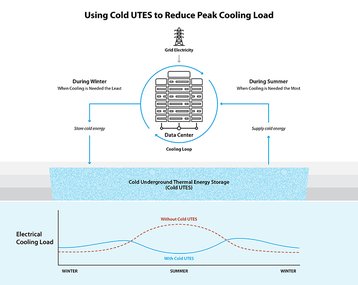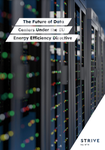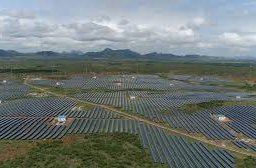The National Renewable Energy Laboratory (NREL), a federally funded research center, has launched a new project to address the increasing energy consumption of data center cooling.
The project, funded by the US Department of Energy Geothermal Technologies Office, will incorporate geothermal underground thermal energy storage (UTES) technology at data center sites nationwide.
According to the NREL, traditional cooling systems - that cool servers through cold air or liquid cooling - account for as much as 40 percent of data center annual energy consumption.
In comparison, geothermal technologies such as the Cold Underground Thermal Energy Storage (Cold UTES) project use off-peak power to create underground cold energy reserves, which can be incorporated into existing data center cooling systems and used during grid peak load hours, reducing energy consumption.
According to the NREL, charge/discharge cycling allows for better optimization based on time of use and other key grid parameters, similar to conventional battery charge/discharge cycling, reducing the grid's overall operating costs.
In addition, the center says that the system offers both short-term storage, seen in conventional grid battery systems, as well as long-duration energy storage at seasonal time scales.
“Our expectation is that a Cold UTES system can provide a long-duration energy storage and industrial-scale cooling solution that is commercially attractive and technically viable for data centers,” said Jeff Winick, technology manager at DOE’s Geothermal Technologies Office. “This project will confirm the potential of these systems to provide significant savings and value to data center operators, utilities, and grid system operators.”
The project's main aims are to reduce strain on the grid from data centers, reduce the energy cost to data centers, and reduce the cost of data center cooling systems. The project ultimately aims to illustrate how Cold UTES can be a commercially and technically viable solution for large data center cooling loads.
Guangdong Zhu, a senior researcher in NREL’s Center for Energy Conversion and Storage Systems, is the principal investigator for the project. The project is also supported by experts from Lawrence Berkeley National Laboratory, Princeton University, and the University of Chicago.
“This project will help accelerate the development, commercialization, and use of next-generation geothermal energy storage technologies, thereby establishing American global leadership in energy storage," Winick said.
The Australian Government funded a similar project at the Pawsey Centre supercomputer in Perth. The CSIRO Geothermal Project works by pumping cool water from a shallow aquifer beneath the facility to cool the supercomputer and then reinjecting the heated water back into the aquifer downstream. According to CSIRO, the system will save approximately 14.5 million liters (3.83 million gallons) of water in the first two years of operation compared with traditional cooling technology.







